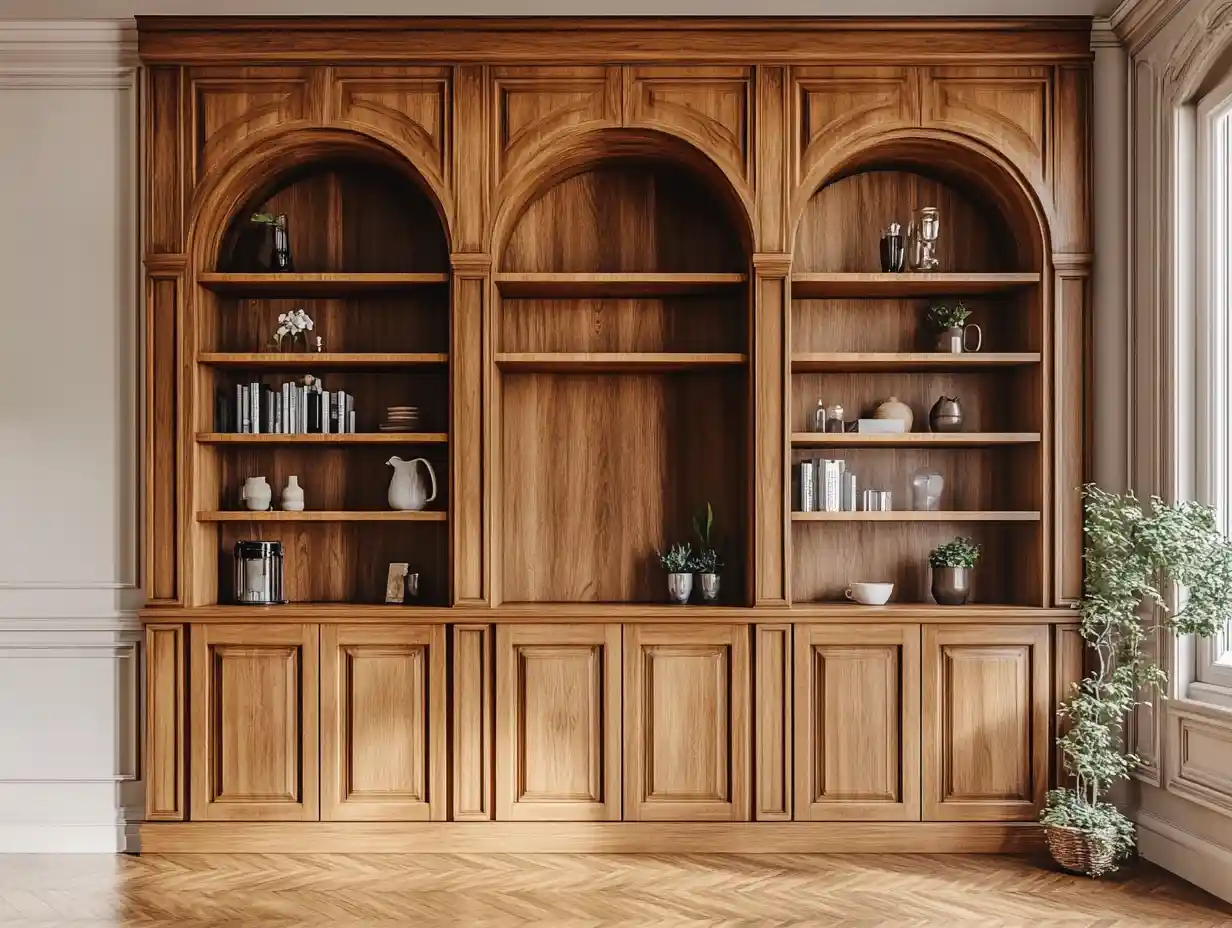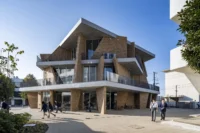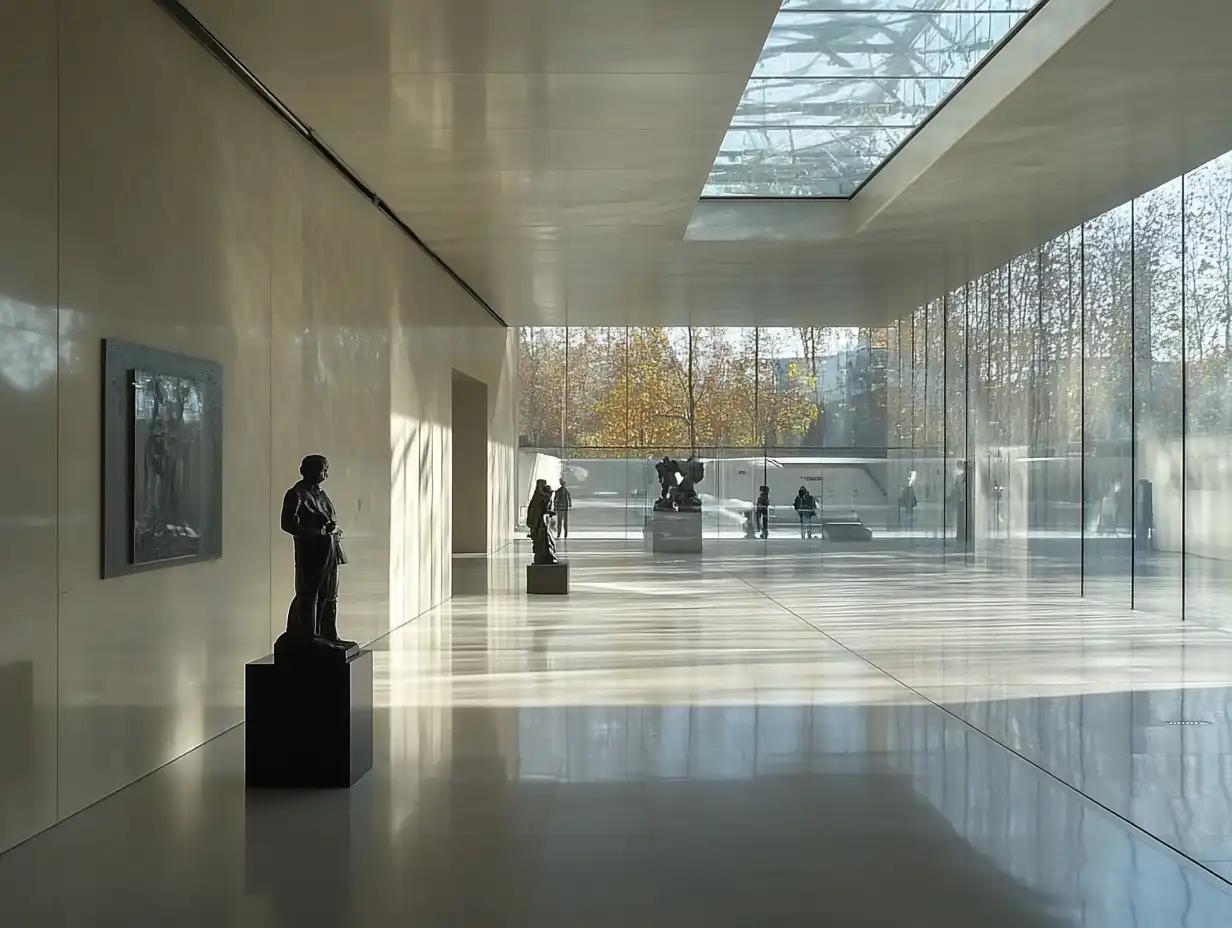When it comes to architectural design, wooden cabinets have stood the test of time, offering both functionality and elegance. As we explore the world of interiors, it’s clear that these timeless pieces have a unique way of blending into various styles, from rustic charm to modern minimalism. Wood, with its natural warmth and versatility, has been a staple in homes for generations.
Our fascination with wooden cabinets isn’t just about aesthetics; it’s about their enduring appeal and adaptability. Whether it’s the rich grain of oak or the smooth finish of maple, each type of wood tells its own story, adding character and depth to any space. In an era where trends come and go, wooden cabinets remain a constant, a testament to their timeless allure. Let’s delve into why these design elements continue to captivate architects and homeowners alike.

The Timeless Appeal of Wooden Cabinets
Wooden cabinets consistently captivate us with their inherent warmth and versatility. They integrate effortlessly into diverse design themes, enhancing spaces without overpowering them. We observe how different wood species, like cherry and walnut, bring unique grains and colors, contributing to an organic aesthetic.
Such cabinets not only offer visual appeal but also exemplify durability. When crafted well, they endure for decades, aging gracefully while maintaining structural integrity. This longevity supports sustainability, as quality wood cabinets reduce the need for frequent replacements.
Functionality remains a key trait, with customizable storage solutions fitting individual needs. Whether in kitchens or bathrooms, wooden cabinets accommodate various configurations and hardware finishes, enhancing utility. The ease of refinishing or repainting adds to their adaptability in evolving design trends.
We appreciate the tactile quality wood offers, an element often lost in synthetic alternatives. The natural textures and finishes of wooden cabinets provide a sensory connection, enriching the user experience. While trends fluctuate, the timeless nature of wooden cabinets anchors them as a staple in architectural design.
Historical Significance in Architecture
Wooden cabinets have played a crucial role in architecture for centuries, showcasing durability and timeless design.
Evolution Through the Ages
Wooden cabinets have adapted over the centuries, evolving alongside architectural advancements. In ancient times, they served both functional and decorative roles, with intricate carvings reflecting cultural artistry. During the Renaissance, cabinet designs became more elaborate, using exotic woods and inlay techniques. By the 18th century, craftsmen began integrating features such as dovetail joints and veneering, allowing for greater precision and aesthetic appeal. Their evolution signifies an ongoing adaptation to cultural and technological changes while maintaining core design principles.
Influence on Modern Design
In modern architecture, wooden cabinets continue to influence design trends through their adaptability and aesthetic appeal. Architects and designers incorporate them into open floor plans, using sleek lines and minimalistic finishes to create unified spaces. Their use of sustainable materials aligns with contemporary eco-friendly practices, further enhancing their relevance. Modern design often mixes materials like metal and glass with wood, allowing wooden cabinets to remain a constant in dynamic architectural landscapes. These designs demonstrate the enduring legacy of wooden cabinets, bridging traditional craftsmanship with contemporary design philosophies.

Material Quality and Craftsmanship
Wooden cabinets stand out for their material quality and intricate craftsmanship. The natural beauty and durability of wood appeal to those seeking timeless elegance.
Types of Wood Used
Selecting the right wood type is essential in cabinet design. Oak, known for its strength and prominent grain, brings a classic look to interiors. Maple offers a smooth finish and subtle grain, ideal for a clean aesthetic. Cherry wood ages gracefully, its rich tones darkening over time. Walnut, with its deep color, adds a touch of luxury. These wood options provide various aesthetic and functional qualities, catering to different tastes and needs.
Crafting Techniques
Craftsmanship in wooden cabinets is pivotal to their longevity and allure. Traditional joinery methods like dovetail and mortise-and-tenon joints ensure structural integrity without relying on nails or screws. Hand-carved details lend uniqueness, showcasing the artisan’s skill. Modern techniques integrate precision tools to achieve sleek finishes while honoring traditional methods. This blend of old and new crafting techniques guarantees that wooden cabinets continue to be a premium choice in architectural design.

Versatility in Design
Wooden cabinets exhibit remarkable versatility, fitting seamlessly into diverse architectural styles. They’re adaptable to various configurations and customizable to suit individual preferences.
Styles and Configurations
Wooden cabinets complement a range of styles, from traditional to contemporary. In rustic settings, they enhance warmth with distressed finishes and natural knots. Modern designs embrace sleek lines and minimalistic aesthetics. Transitional styles blend elements, offering classic frames with modern touches. Configurations include standalone units, built-ins, and floating cabinets, each serving distinct spatial functions. For example, built-ins maximize storage in kitchens, while floating cabinets add elegance in bathrooms.
Customization Options
Customization offers endless possibilities. We can select from a variety of wood stains, paints, and finishes to match any color scheme. Hardware choices, like handles and hinges, add personalization. Internal configurations can include adjustable shelves, pull-out drawers, and integrated lighting. Specialized compartments, such as spice racks or wine holders, cater to specific needs. By using custom options, wooden cabinets enhance both functionality and aesthetic appeal in any space.
Functionality and Storage Solutions
Wooden cabinets in architecture offer robust functionality paired with practical storage solutions. They enhance interior spaces by providing organized, efficient use of space without compromising design.
Optimizing Space
Cabinets maximize space in any room, especially in kitchens and bathrooms. Custom shelving systems and drawer dividers ensure that even the smallest areas are utilized effectively. For example, pull-out shelves and lazy Susans increase access to items stored in deeper corners. Built-in organizers and adjustable shelving accommodate evolving storage needs, making wooden cabinets versatile choices for optimizing space.
Enhancing Aesthetics
Functionality doesn’t overshadow aesthetics with wooden cabinets. They elevate interior design with their natural grain patterns and finishes. Various wood stains and decorative hardware options enable personalization to match any style. Cabinets contribute visually by serving as focal points or subtle complements, depending on their placement and treatment. Through thoughtful design and placement, wooden cabinets enhance both form and function, creating harmonious spaces.

Environmental Considerations
Wooden cabinets present environmentally conscious options in architectural design. They offer advantages in sustainability and eco-friendly practices.
Sustainability of Wooden Cabinets
Sustainability represents a key advantage of wooden cabinets. Wood is a renewable resource, given responsible sourcing from managed forests. Forest management initiatives ensure trees are replenished, maintaining ecological balance. The longevity of wooden cabinets also contributes to sustainability, as they reduce waste by eliminating frequent replacements. Their durability extends their lifecycle, conserving resources.
Eco-friendly Practices
Eco-friendly practices are integral to the production of wooden cabinets. Many manufacturers now embrace low-VOC (volatile organic compounds) finishes, reducing toxic emissions and improving indoor air quality. Using recycled or reclaimed wood further exemplifies commitment to sustainability, minimizing reliance on new timber and reducing deforestation. These practices highlight the eco-conscious nature of wooden cabinets, aligning with broader green building trends.
Conclusion
While our article avoids conclusions, it suggests wooden cabinets present an enduring appeal in architectural design with their blend of functionality and elegance. These cabinets integrate seamlessly into various styles and offer a sustainable, customizable option with their timeless appeal and material integrity. Their rich history, coupled with modern adaptability, ensures they remain a cornerstone in creating harmonious and dynamic spaces.















Leave a comment